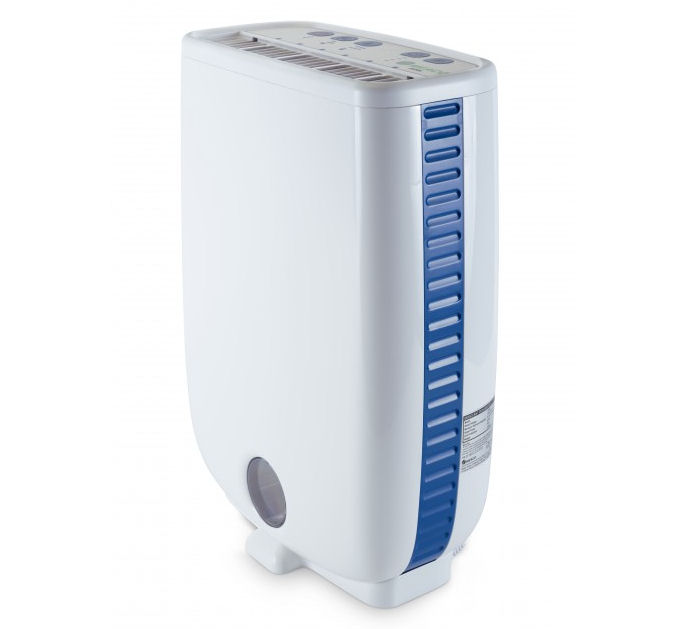

By connecting our conservatory dehumidifier and placing it under smart home control, it is possible to deliver a much better user experience and greater comfort in this room in our home. Our technology agnostic approach enables it to also be controlled by a wide range of user interfaces in our smart home. Like many of the devices and appliances in our home though, we aim for fully automated, intelligent control with a zero-touch user experience whenever possible.
We chose a model of dehumidifier that 'resumes' its previously set function when power is reconnected, the Meaco DD8L. This means our contextual smart home only has to control the power and no greater level of integration is required. This model also features an in-built humidistat, so once the desired humidity level is reached it will go into a power saving mode.
We are monitoring our conservatory humidity with a separate humidity sensor and a number of temperature sensors, which are much better placed to measure humidity in our conservatory and also provide wider context, by reporting back to our contextual smart home. When the humidity level is below 52% we switch the dehumidifier off and when it is above 55%, we switch it back on.
The humidity levels are only really an issue in the colder, wetter months so our model for appliances supports the ability to disable them. In the summer months the windows are left locked slightly open all the time, so it doesn't make sense to run the dehumidifier on the days when we have rain. The roof vent is automatically controlled too. Our use of controllers makes it really easy to configure when the appliance is enabled or disabled and we can even do this based on the season.

In this particular case our dehumidifier is connected using an Everspring AN157-3 Z-Wave appliance plug/module but our technology abstraction allows any similar type of smart plug to be used. This is used to tell our Home Control System when the dehumidifier is switched on and off. It is also used for intelligent control of the power to our dehumidifier. This particular smart plug / appliance module does not support energy monitoring.
We use models for all connected appliances and for all types of connected appliances in our Home Control System. Our technology abstraction this means that any appliance added to our home inherits all of the capabilities supported by our models and all those of our wider smart home. Essentially, every connected appliance becomes instantly very smart and they can all be controlled by any of the many user interfaces available, providing a great user experience.
Our models include the ability to track when devices are switched on or off and how long each state is maintained. For all devices it is really easy to set a time period to generate notifications and/or switch the state. So with some simple configuration, any connected device or appliance can behave this way. It is also possible to configure voice announcements or trigger the alarm.

Our conservatory dehumidifier is under intelligent control by our Home Control System and it will turn it on and off automatically at set times of the day and only at certain times of the year, when the humidity level gets too high.
We have a humidity sensor in our conservatory and several temperature sensors mounted at different heights (to get a vertical temperature profile, which is used to intelligently control the ceiling fan), so our contextual smart home can monitor temperature and humidity levels and log them over time.

The Meaco DD8L is a desiccant dehumidifier, rather than a compressor based dehumidifier. We chose this type because it works better at the lower temperatures found in our conservatory over the winter months. It has a 2 litre collection tank which can fill up fairly quickly. There is also a pipe to allow continual draining of the water but we currently have no route to the outside for this pipe.
We are looking at options to raise the dehumidifier up, to enable it to drain into the irrigation tank in our conservatory. This way, we recycle the water collected directly.
When the storage tank is full, the dehumidifier currently stops automatically and our smart home will see the humidity levels start to rise. If our smart home knows the dehumidifier is enabled but the humidity level is above a certain level (e.g. 56%), then our smart home will send us a notification to remind us to empty the storage tank. We could monitor energy usage (using a different Z-Wave appliance module) but, this approach works just as well.
The approach we are using allows us to control the humidity level between two set levels and not just the level determined by the dehumidifier. This saves us energy as the dehumidifier is only on for about 50% of the time and we determine what is a comfortable humidity level. We obviously also save a lot of energy over the summer by having the dehumidifier disabled.